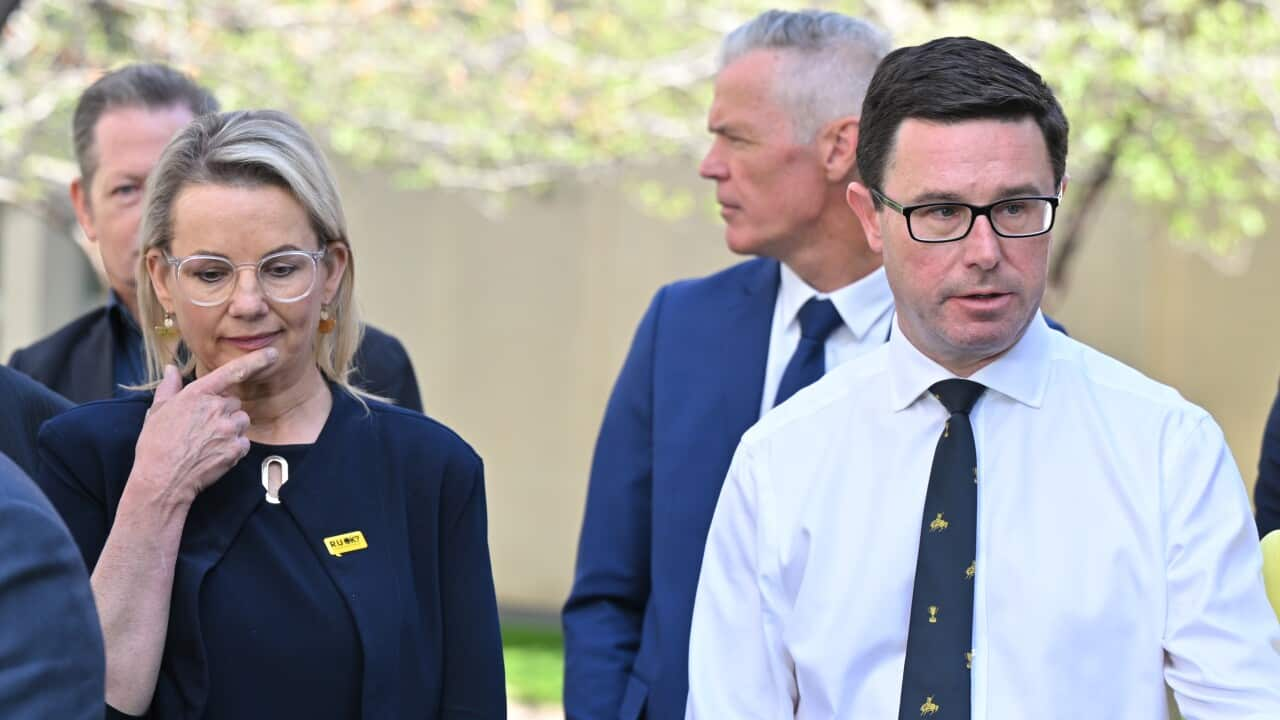The Nationals have split from the Liberals for the third time since the Coalition was formed over 80 years ago.
On Tuesday, Nationals leader David Littleproud confirmed that he could not reach a Coalition agreement with Liberal leader Sussan Ley, which is typically re-negotiated after every election or leadership change.
Usually, these discussions pertain to frontbench positions, not policy. Coalition positions are decided later, after individual party rooms have had the chance to discuss and put a position forward.
However, SBS News understands that there are often also non-negotiables put on the table.
Littleproud revealed the Nationals had several non-negotiables, and without these conditions met, the party could not re-enter an agreement “based on principle”.
So what led to their split, and how much of it was a “nuclear meltdown”?
When did the Coalition form and why?
Originally known as the Country Party, the National Party of Australia was established over 100 years ago to represent rural, remote, and regional Australia.
The Liberal Party was established by Robert Menzies in 1944 to oppose the Labor Party and concerns around the union movement, aiming to represent those who were self-employed and the middle class.
When the Liberal Party came around, the Nationals were no strangers to coalitions — they’d been part of coalitions with the now-extinct Nationalist Party in the 1920s, and the United Australia Party in the 1930s.
The Coalition first formed government under former prime minister Robert Menzies in 1949. Credit: PA/Alamy
Dr Jill Sheppard is a senior lecturer in politics at the Australian National University.
Sheppard said when the Coalition formed in 1945, the Liberal Party was the fledgling and the Country Party was “the more reliable and experienced campaigning organisation”.
But it was a mutually beneficial relationship to become the Coalition, first forming government in 1949 under then-prime minister Menzies.
The Nationals have a limit on the number of seats they can expand to in regional areas and need to govern with another party, while the Liberals would find it hard to communicate with metro, suburban and regional voters if they were to campaign alone.
However, there have been fractures throughout their 80-year relationship. They split in 1972 and then again in 1987, both times healing the rift in time for upcoming federal elections.
“Even though they work together, there’s always been quite a bit of mistrust,” Sheppard told SBS News.
Sheppard said there had historically been a sense among the parties that “if the other one didn’t exist, we would be stronger in our own right”, despite there being “almost no evidence for that”.
‘A nuclear meltdown’: Why has the Coalition broken up in 2025?
Rumours of a split first emerged last week, with some Nationals like senator Matt Canavan calling for the Coalition to “dump” its net-zero position.
In the lead-up to their election defeat, the Coalition had pitched nuclear reactors as the pathway to achieving net-zero, offering them as an alternative to Labor’s renewable strategy.
Several Nationals felt emboldened to make demands following the federal election result, which saw the Liberals lose 12 lower house seats. The Nationals in contrast retained all their lower house seats, losing one in the upper house.
While Littleproud said he would maintain the Nationals’ net-zero commitment from the last election, he did outline four policies that he wanted embedded in a Coalition agreement:
- The adoption of nuclear power in Australia
- The ability to break up the major supermarkets and stop them abusing their power
- A $20 billion regional Future Fund to fix potholes, improve access to things like health care and childcare in remote areas
- Reforming the universal service obligation to ensure all Australians have access to basic telecommunications
The Nationals were also trying to carve out a guarantee that they would not be bound by cabinet solidarity on the shadow cabinet, meaning they could vote against the Liberals on policy positions.
While this is allowed on the backbench, traditionally, there is cabinet solidarity on the frontbench.
In contrast, Ley wanted to allow a full review of policies, including nuclear, after being wiped out from both inner-city seats and suburban seats over the last two elections.
Australian Electoral Commission data for the 2025 federal election shows swings against the Coalition in nearly every seat where it proposed a nuclear plant, except for Flynn in Queensland.
Sheppard acknowledged the Coalition had struggled to appease voters in both metro and regional areas as they wanted “fundamentally different policies” on areas like energy.
“The Coalition is finding it increasingly hard to craft a message that they can sell to everyone and that they can convincingly sort of package as a cohesive policy,” she said.
Treasurer Jim Chalmers labelled the breakup of the Coalition a “nuclear meltdown”, going as far as saying that “the Coalition now is nothing more than a smoking ruin”.
In his announcement to part ways, Littleproud said he looked forward to working with the Liberals after the party “rediscovered who they are and what they want to be” under Ley’s leadership.
He committed to regular catch-ups with Ley, keeping the door open for a partnership but clarifying the Nationals would contest the next federal election without the Liberals if an agreement was not reached.

